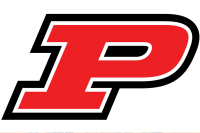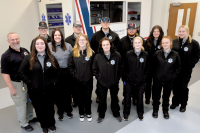Making friends with an injured crow
According to the current Ornithological Union listing, the appropriate non-scientific name for a crow is “common crow.” How apt! Like most commonly observed objects, crows, for the most part, flit across our field of vision unheeded. Cawing, they flap away over the fields and into the woods like pieces of black flannel caught in a breeze. We hear and see them, but we don’t really pay attention. We rarely think about them. We never ask ourselves, “What are these birds up to?”
But that’s not the case with Lake Junaluska resident Sue Ellen Jackson. Lately, she’s been observing crows up close and personal — one crow in particular. His name is Roger. Here’s the story.
Some weeks ago, Jackson sent me the following email: “I often have crows visiting my porch (usually about five of them who all come together) because I put out assorted bird seed and food scraps, including small chunks of meat, fish, poultry, bread and leftover cat food .... the crows like the hearty food and it keeps them from stealing the seeds and nuts from the smaller birds. My other regular visitors include titmice, chickadees, house or purple finches (I can’t tell which), towhees, sparrows, blue jays, cardinals, mourning doves, etc. I just scatter the seed and scraps rather than using a feeder, as this allows more birds to feed at one time, and the larger area gives each species plenty of room since they aren’t competing with bigger birds for the same food. Plus, I can watch them up close, which I enjoy.
“A couple days ago, I noticed an injured crow on the porch. One wing appeared to be dragging a bit, and I could see some feathers missing near his ‘shoulder.’ I tried to catch him in a box but he was able to evade me and run away (he couldn’t fly) and I was in my pajamas so I couldn’t chase him very far. He was back again today. He is able to hop up on the porch (the patio ledge is about 2-feet tall) and he seems healthy except for his wing, though I don’t know how long he can survive without being able to fly, especially in winter.
“I put out lots of extra food today and he ate well, then wandered off again, but I’m worried that some neighborhood cat or other predator will get him. Is there any animal-welfare agency that could trap him and fix his wing, or put him in a bird sanctuary if it can’t be repaired? Or, will it heal on its own, if I can provide plenty of food for him until it does?”
I replied: “Hello Sue Ellen . . . call one of your local animal hospitals and see if they know of anyone who does wild animal rescues ... let me know what happens ... good luck, George.”
Related Items
On March 20, I received another email from Sue Ellen: “I’ve been meaning to get back to you about the injured crow I wrote about before. I was going to make another attempt to trap him so he could go to ‘bird rehab’ but he kept his distance. So I kept putting food out for him (table scraps — lots of protein and fat to help his bones mend) along with the regular birdseed (several kinds). At first he could only hop, but to my amazement his broken wing healed very quickly and soon he was able to fly, though at very low altitude ... barely a foot off the ground. The wing healed at a bit of an angle, and, when he walks, the wing tip touches the ground, but now he is flying just fine with the other members of his flock. He comes to my ‘bird breakfast buffet’ every morning, sometimes alone and sometimes with his pals. A happy ending.”
This past Monday afternoon I called Sue Ellen for an update. She reported that Roger’s doing fine and still comes to her porch a couple of times a day. Sometimes he brings along one or more of his crow pals. But most of the time he comes alone because, “He seems to like getting all the food himself,” noted Jackson. When asked, she added that she named him Roger, “Because he reminds me of a pirate, as in Jolly Roger.” She obviously likes Roger, and the feelings are apparently mutual. For her, Roger’s no longer a “common crow.”
George Ellison wrote the biographical introductions for the reissues of two Appalachian classics: Horace Kephart’s Our Southern Highlanders and James Mooney’s History, Myths, and Sacred Formulas of the Cherokees. In June 2005, a selection of his Back Then columns was published by The History Press in Charleston as Mountain Passages: Natural and Cultural History of Western North Carolina and the Great Smoky Mountains. Readers can contact him at P.O. Box 1262, Bryson City, N.C., 28713, or at This email address is being protected from spambots. You need JavaScript enabled to view it..









